Anthropology
Related: About this forumEchoes Near Stone Age Rock Art Suggest Rituals Were Common Practice
Learn why the sound of echoes near rock art sites in Finland gives insight to how neolithic people interacted with their artwork.
By Joshua Rapp Learn
Jan 15, 2025 11:30 AM Jan 15, 2025 11:28 AM
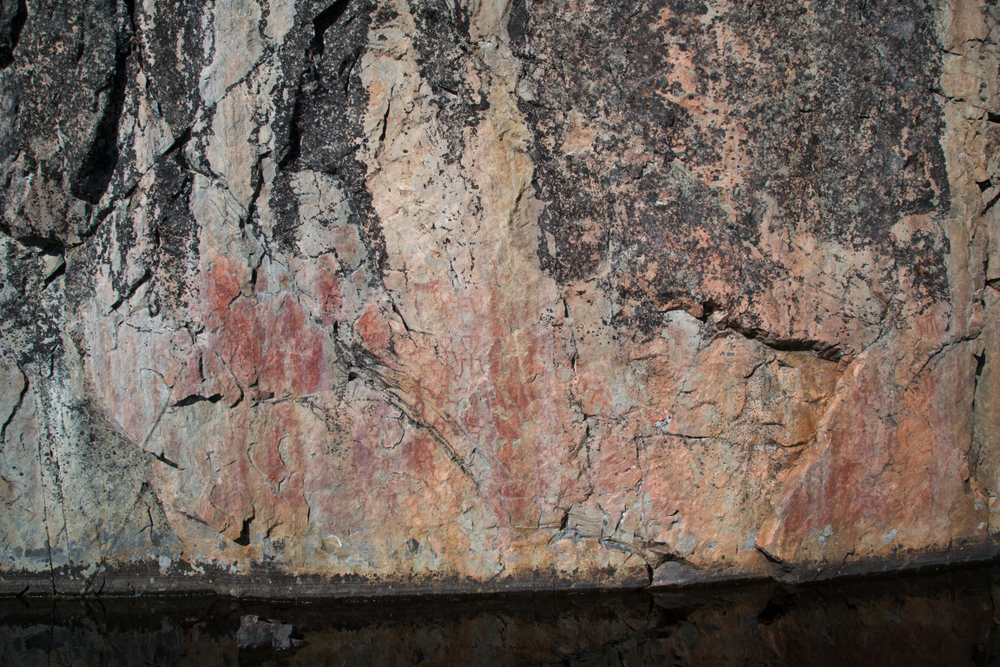
(Credit: nidafoto/Shutterstock)
Years of experiments at rock art sites in Finland have revealed that the echoes produced by smooth cliff faces may have influenced the neolithic people in that area. The artists behind the rock art and the people that later came to admire the figures would have experienced an spiritual sound, according to a recent study published in Sound Studies.
“We almost know nothing about sound in prehistoric times,” says Riitta Rainio, an archaeologist at the University of Helsinki.
Stone Age Rock Art in Finland
Years of experiments at rock art sites in Finland have revealed that the echoes produced by smooth cliff faces may have influenced the neolithic people in that area. The artists behind the rock art and the people that later came to admire the figures would have experienced an spiritual sound, according to a recent study published in Sound Studies.
“We almost know nothing about sound in prehistoric times,” says Riitta Rainio, an archaeologist at the University of Helsinki.
Stone Age Rock Art in Finland
Most of the rock art in Finland dating to the Stone Age, that Rainio and her colleagues examined, was painted between 3,000 years and 7,000 years ago. The art that survives today uses a color red, which comes from mixing iron oxide taken from the soil.
The most common motifs are moose, or elk, humans and boats, and sometimes a mixture of these figures. Some show humans with antlers on their head, or boats with the head and legs of moose.
“Those figures are telling about human-animal relationships in some way,” Rainio says, adding that other archaeological evidence has revealed that Stone Age people in Finland specialized in moose hunting.
Värikallio rock paintings are some of the most famous examples of Stone Age rock art in Finland. Because some of the paintings depict a person drumming with their hands, researchers suggest the neolithic people practiced rituals in these areas. Most of the art was also painted on open cliff faces that rise out of water, which makes great surfaces for creating echoes.
More:
https://www.discovermagazine.com/the-sciences/echoes-near-stone-age-rock-art-suggest-rituals-were-common-practice
Hossa Värikallio Rock Paintings, Finland
Archaeological Site · Hossa National Park · 239 m

Points Finland Hossa National Park Hossa Värikallio Rock Paintings, Finland
Archaeological Site Hossa Värikallio Rock Paintings, Finland
Archaeological Site · Hossa National Park · 239 m
Map / Hossa Värikallio Rock Paintings, Finland
The Hossa Värikallio rock paintings in Hossa National Park is one of the largest prehistoric paintings in Finland. A trip to Värikallio is one of the must-do activities in Hossa.
The pictures of the stone wall, rising from lakeSomerjärvi, were painted during the Stone Age, about 3 500 to 4 500 years ago. Hossa used to be a hub of waterways in ancient times. The routes extended west to the Gulf of Bothnia and east to the White Sea. The rock paintings of Värikallio may have marked a signposted route or described events.
Most often, images of rock paintings are combined with hunting magic. The cliffs may also have been places of worship associated with shamanism. 61 distinct patterns related to hunting and shamanism have been identified from the rock painting. It is rare that no boat pictures have been found. Paintings are done either from a boat or from top of the icy lake. The rock paintings of Värikallio were officially discovered in 1977.
A walking bridge and viewing platform make the rock paintings accessable. At Somerjärvi you can find also a cooking shelter, a campfire site, and a dry toilet. The nearest cafés are at Julma-Ölkky (open in summer) and at Hossa Visitor Center.
https://www.outdooractive.com/en/poi/hossa-national-park/hossa-vaerikallio-rock-paintings-finland/45266809/
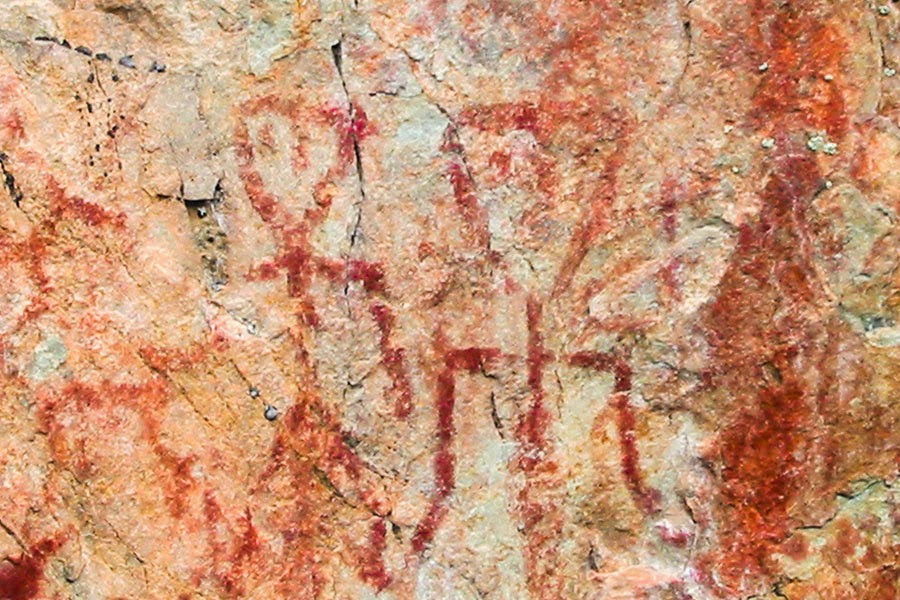



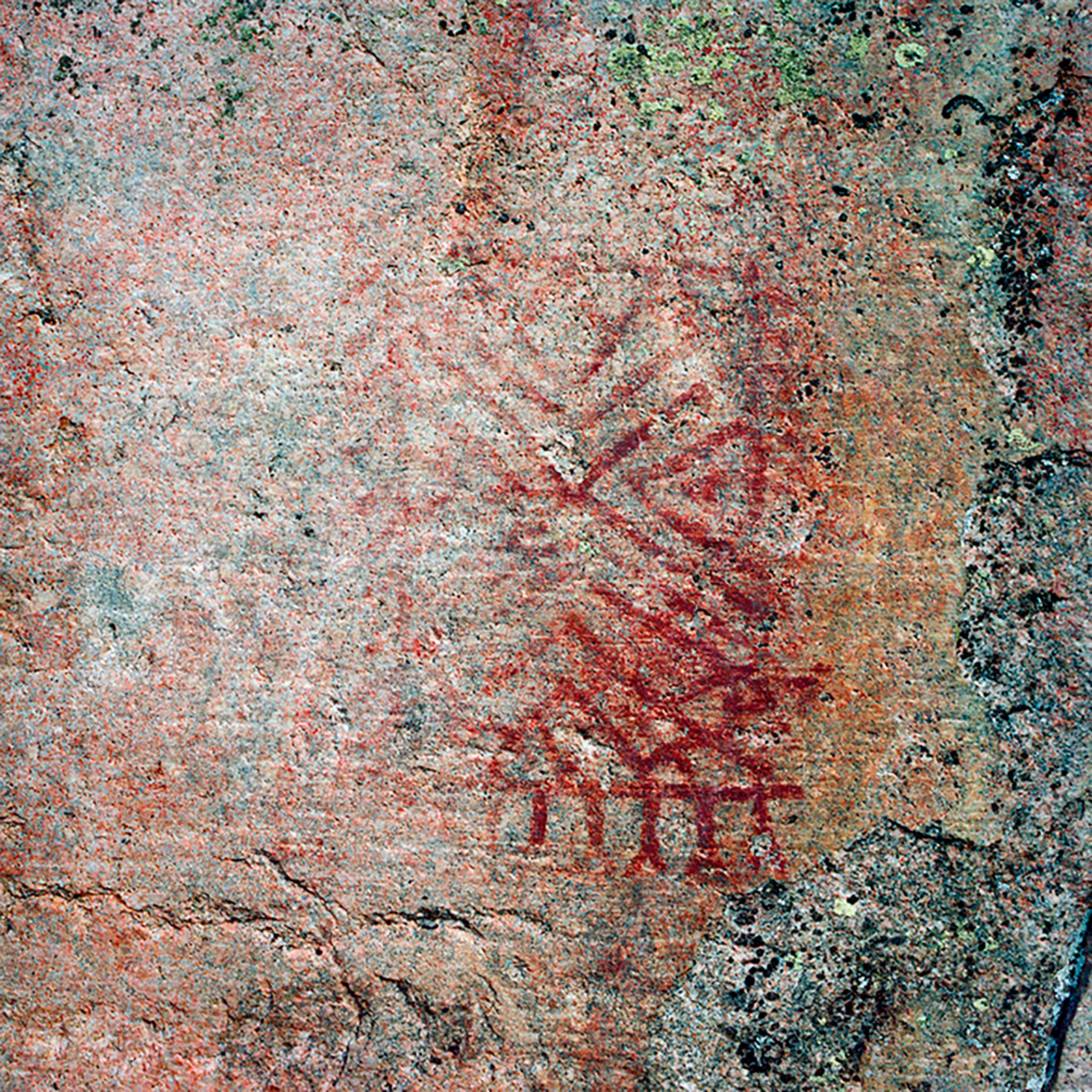
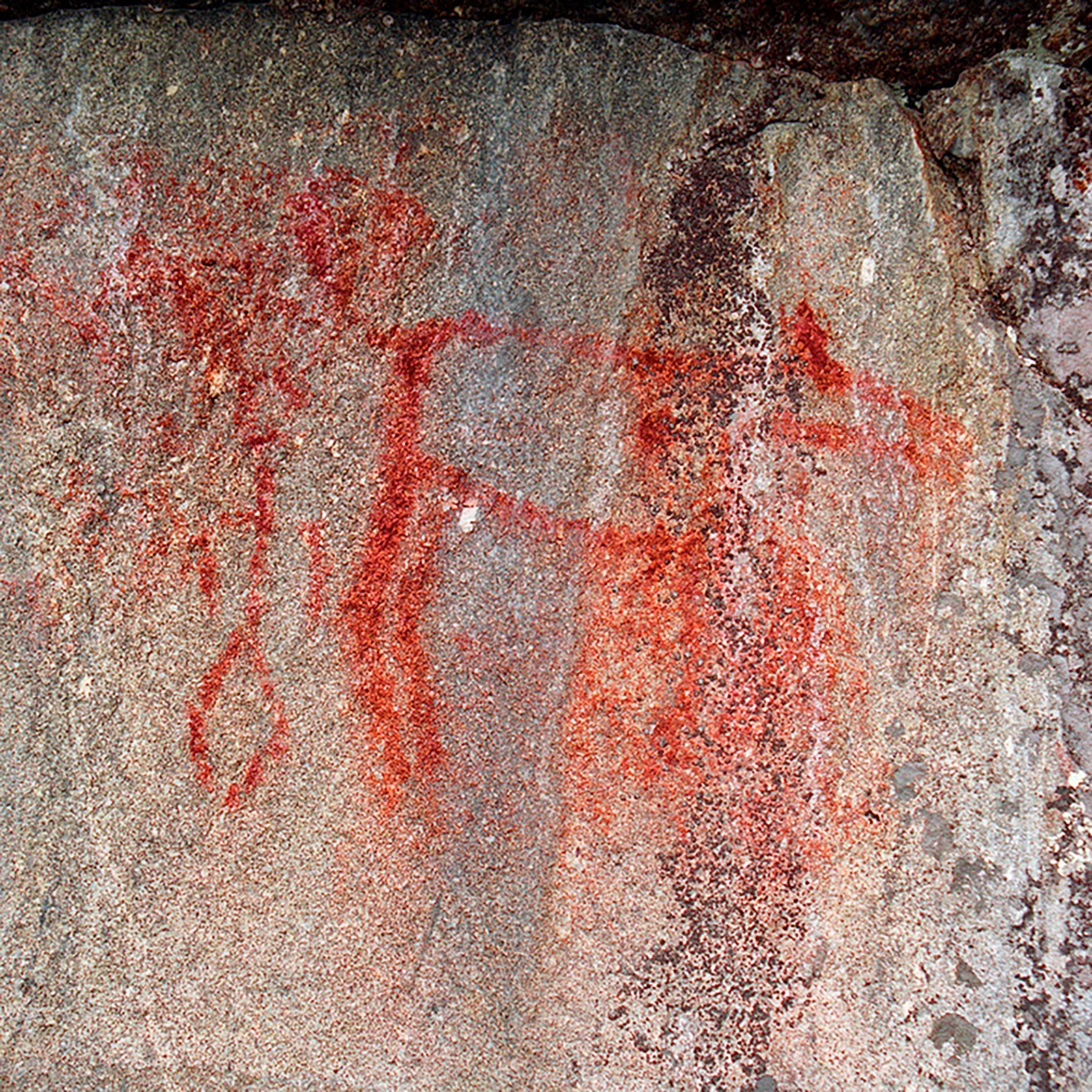

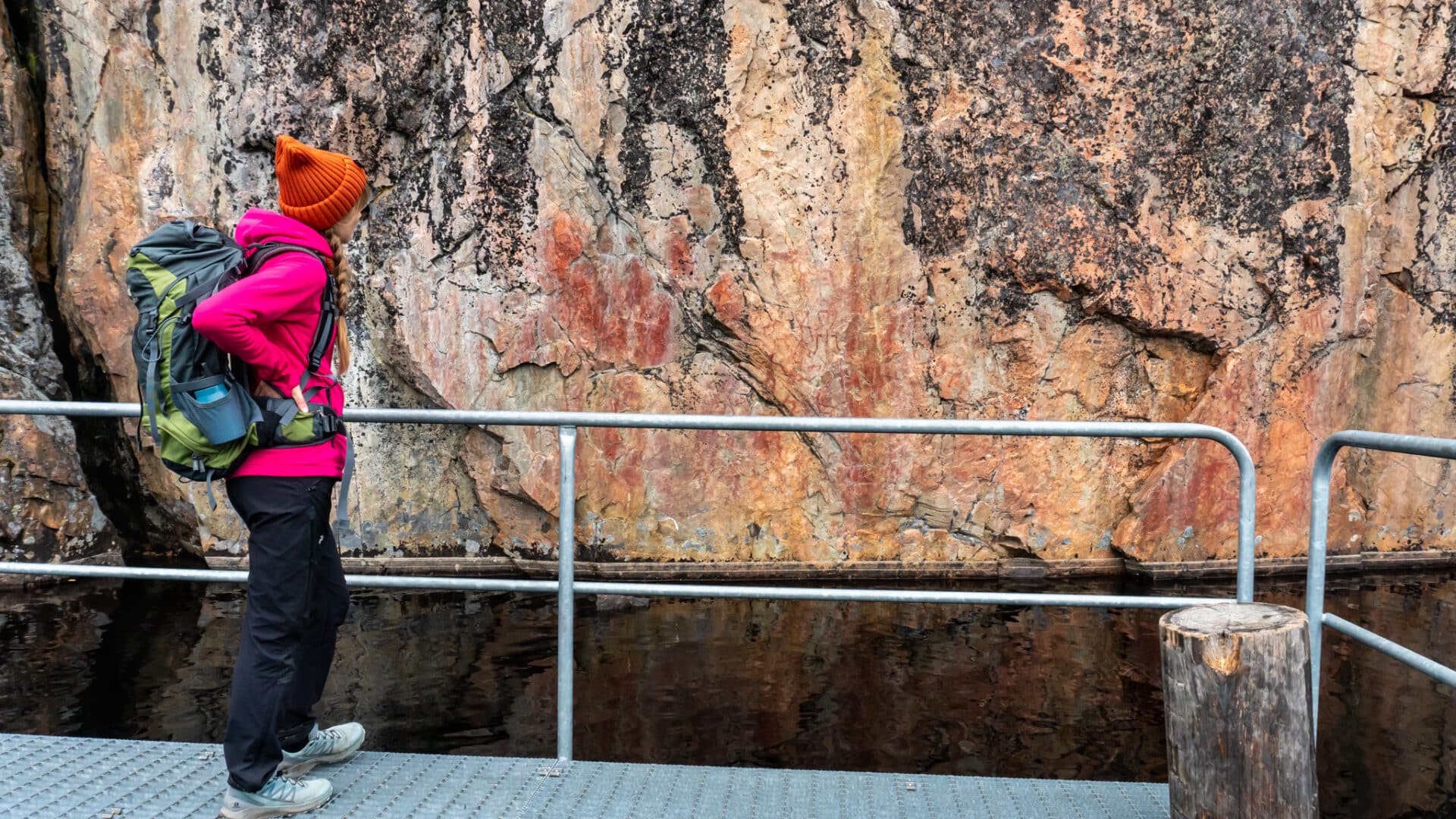
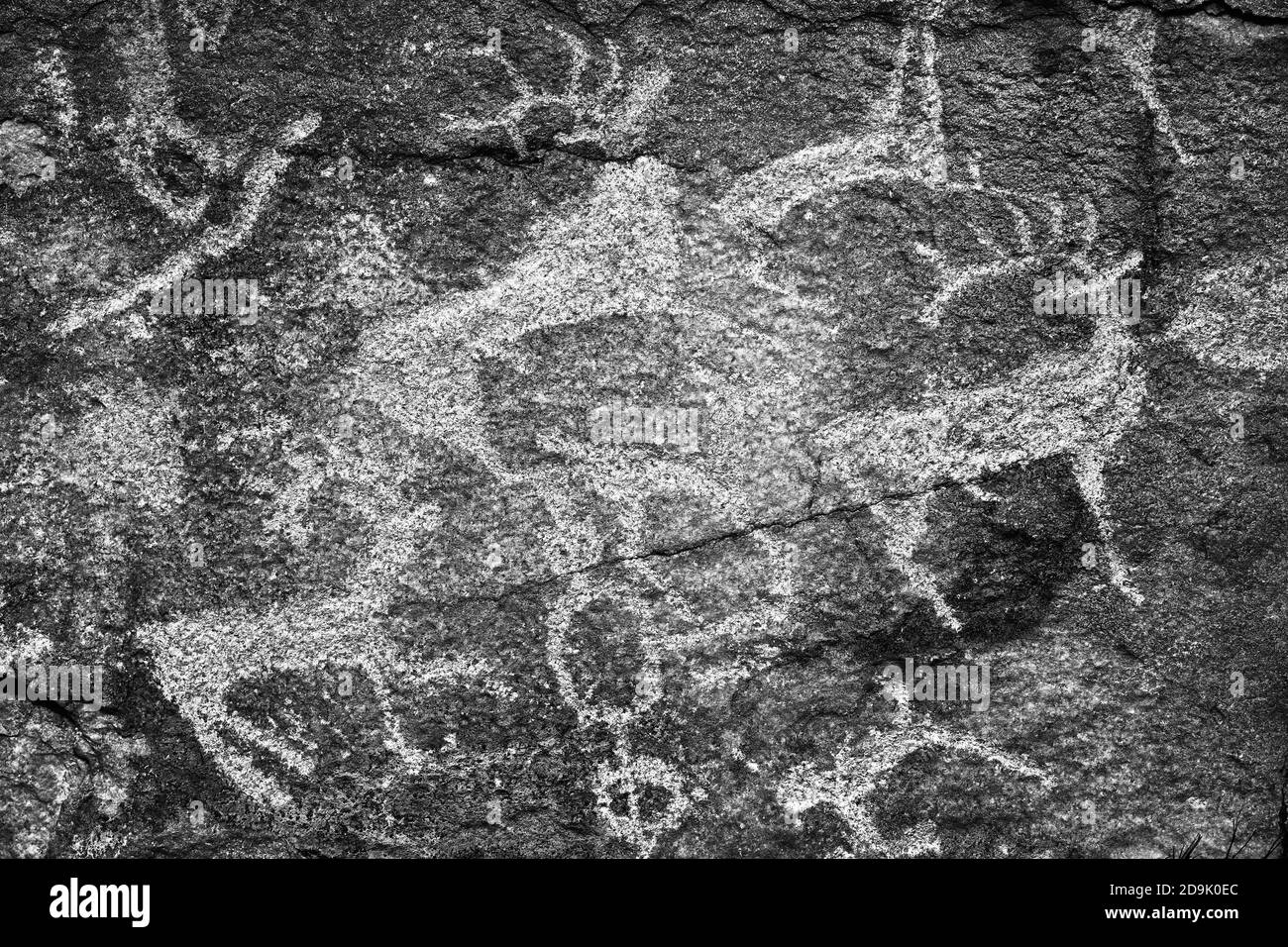
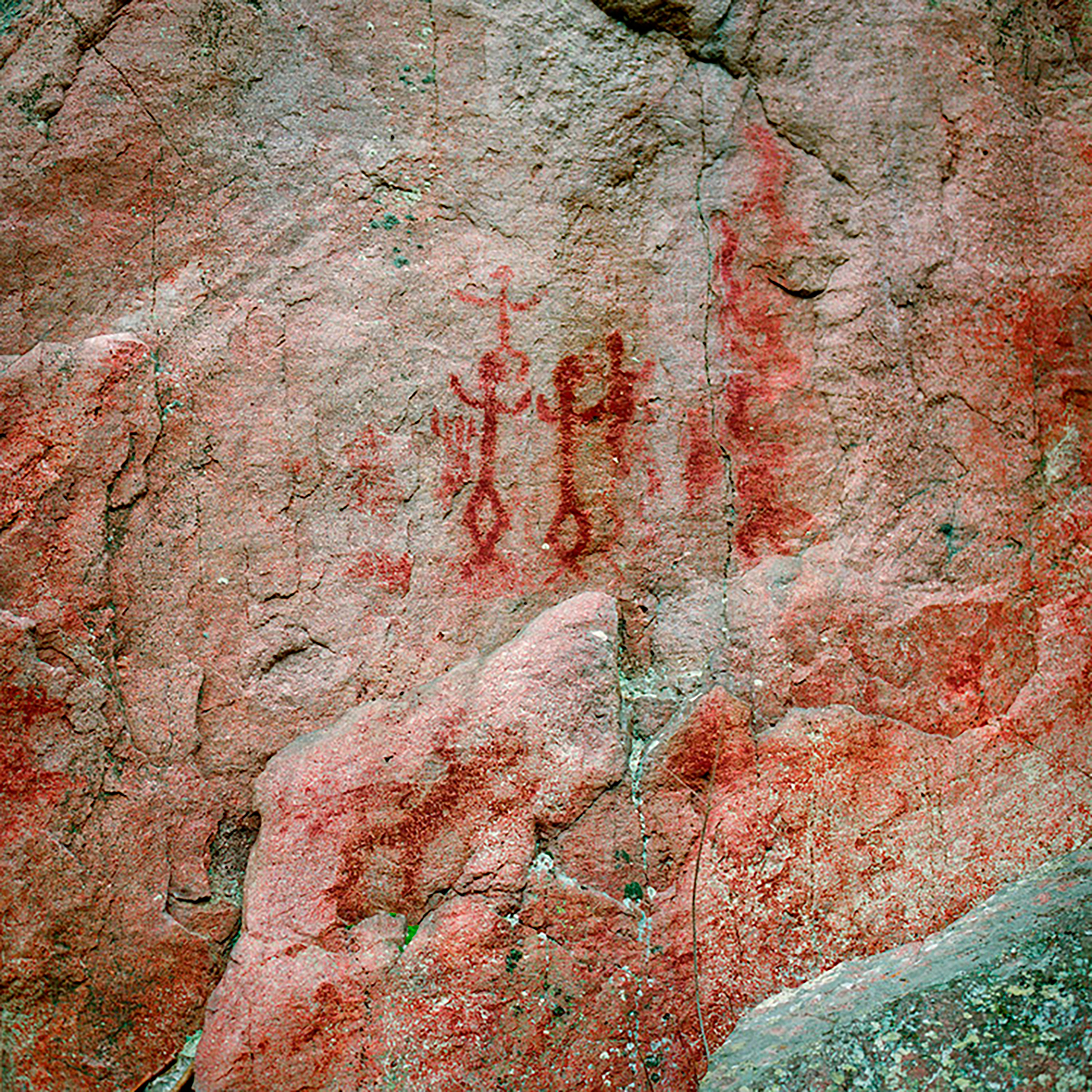

2naSalit
(94,208 posts)Some of the shapes and representations are the same as those found in the western US sites. I have noticed that a lot of the ancient ritual music from many different cultures are the same tones and devices used in numerous parts of the planet.
![]()